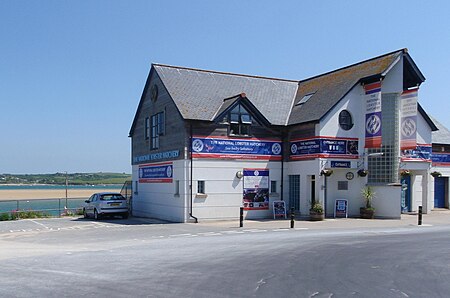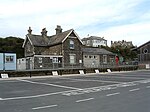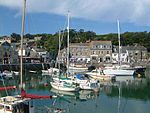National Lobster Hatchery
Charities based in CornwallFish hatcheriesLobster fishing

The National Lobster Hatchery is a charitable organization located in Padstow, England. The hatchery was opened in August 2000 and is situated on South Quay in Padstow, Cornwall. The organisation is a marine Conservation, research and education charity that focuses its efforts on the European lobster. It exists to serve the coastal fishing communities of Cornwall and the Isles of Scilly. The hatchery consists of a visitor centre, shop and conference facility, as well as various culture spaces, laboratories and technical facilities.
Excerpt from the Wikipedia article National Lobster Hatchery (License: CC BY-SA 3.0, Authors, Images).National Lobster Hatchery
South Quay,
Geographical coordinates (GPS) Address Phone number Website Nearby Places Show on map
Geographical coordinates (GPS)
| Latitude | Longitude |
|---|---|
| N 50.5385 ° | E -4.935 ° |
Address
The National Lobster Hatchery
South Quay
PL28 8BL
England, United Kingdom
Open on Google Maps











